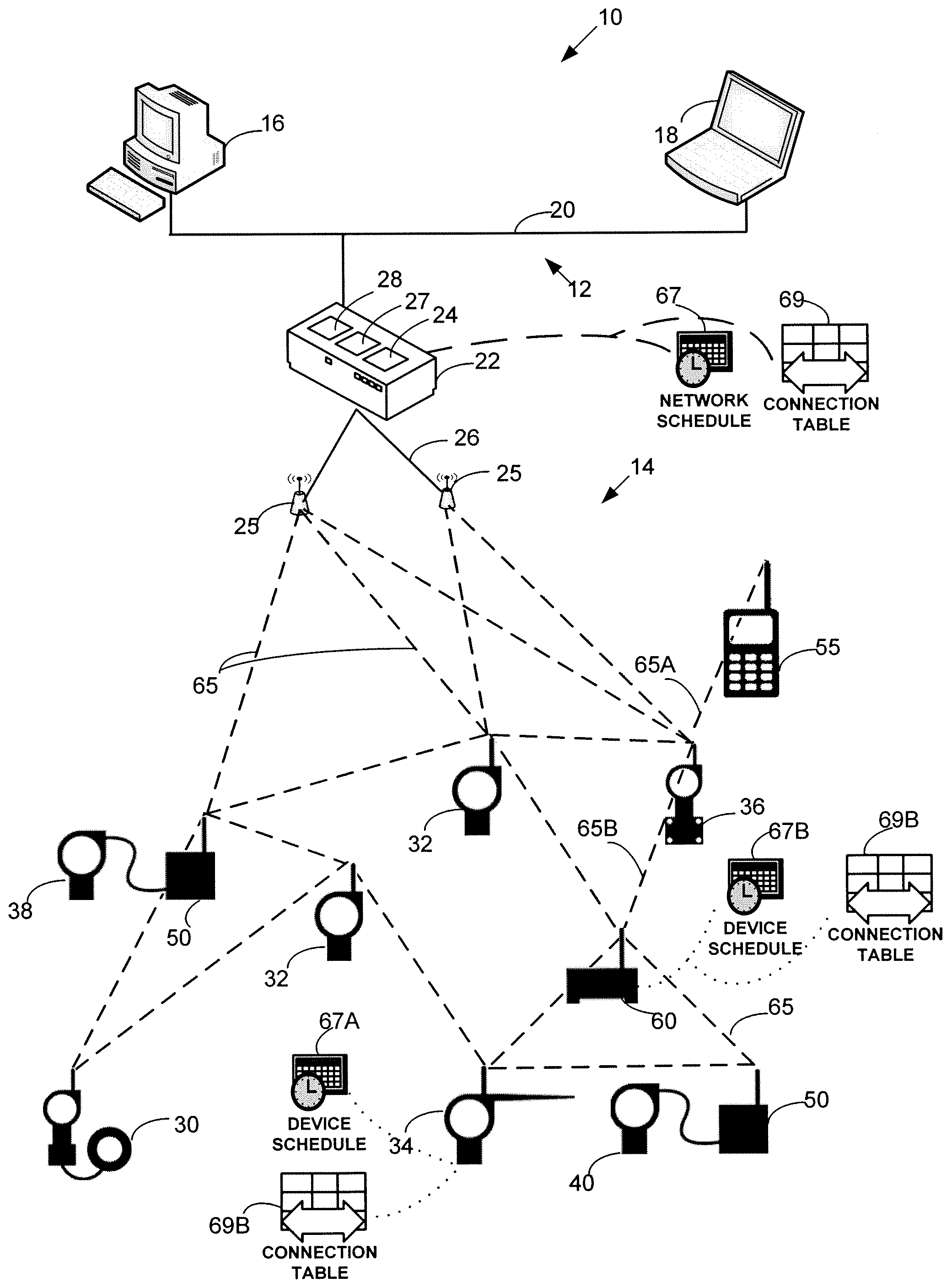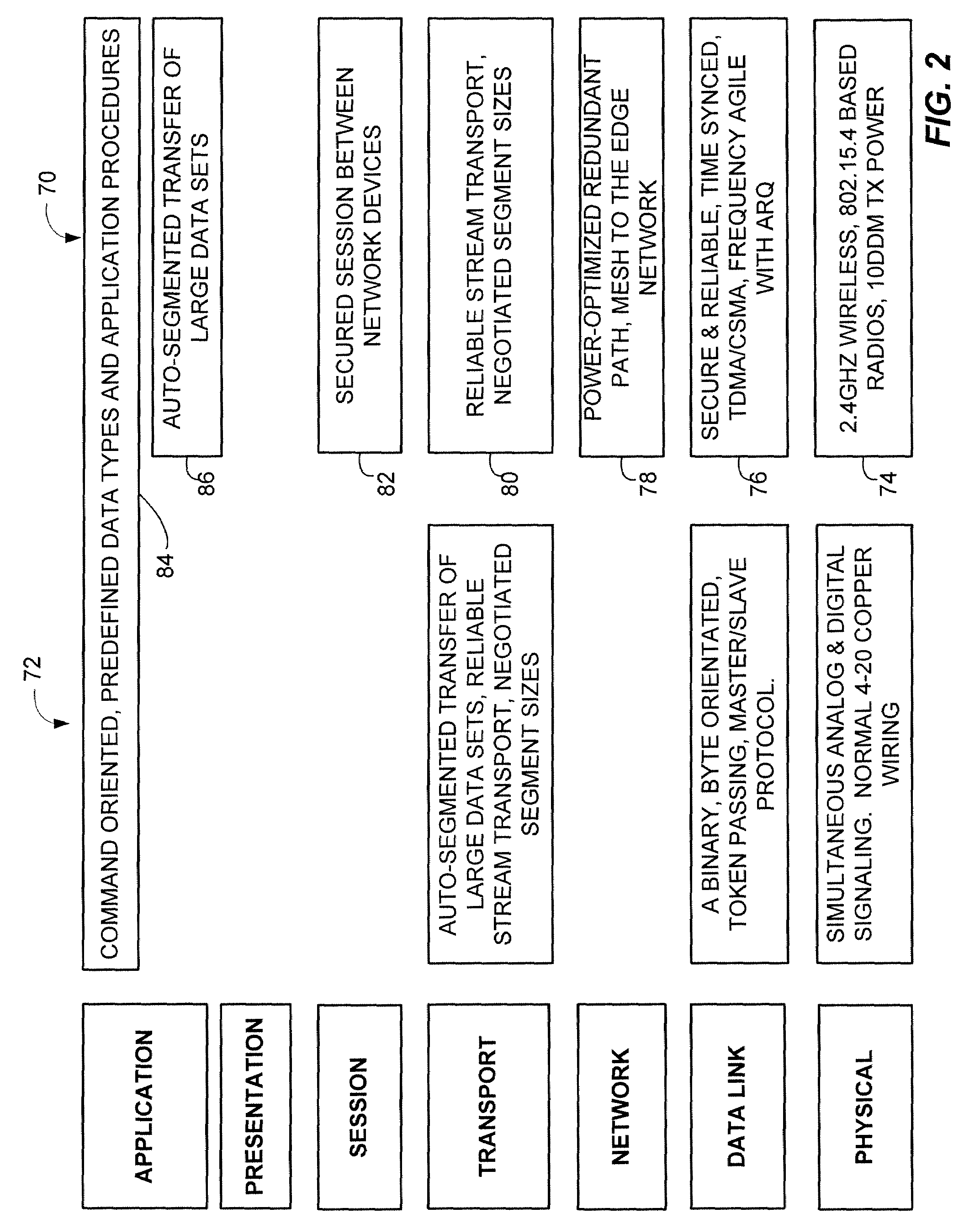Increasing Reliability and Reducing Latency in a Wireless Network
a wireless network and reliability technology, applied in the field of wireless communication, can solve the problems of requiring a relatively high overhead, communication networks with specific requirements that are not fully satisfied, and architects and developers often encounter new problems which are not easily addressed, so as to achieve the effect of conserving power
- Summary
- Abstract
- Description
- Claims
- Application Information
AI Technical Summary
Benefits of technology
Problems solved by technology
Method used
Image
Examples
Embodiment Construction
[0038]FIG. 1 illustrates an exemplary network 10 in which the scheduling and routing techniques described herein may be used. In particular, the network 10 may include a plant automation network 12 connected to a wireless communication network 14. The plant automation network 12 may include one or more stationary workstations 16 and one or more portable workstations 18 connected over a communication backbone 20 which may be implemented using Ethernet, RS-485, Profibus DP, or using other suitable communication hardware and protocol. The workstations and other equipment forming the plant automation network 12 may provide various control and supervisory functions to plant personnel, including access to devices in the wireless network 14. The plant automation network 12 and the wireless network 14 may be connected via a gateway device 22. More specifically, the gateway device 22 may be connected to the backbone 20 in a wired manner and may communicate with the plant automation network 1...
PUM
 Login to View More
Login to View More Abstract
Description
Claims
Application Information
 Login to View More
Login to View More - R&D
- Intellectual Property
- Life Sciences
- Materials
- Tech Scout
- Unparalleled Data Quality
- Higher Quality Content
- 60% Fewer Hallucinations
Browse by: Latest US Patents, China's latest patents, Technical Efficacy Thesaurus, Application Domain, Technology Topic, Popular Technical Reports.
© 2025 PatSnap. All rights reserved.Legal|Privacy policy|Modern Slavery Act Transparency Statement|Sitemap|About US| Contact US: help@patsnap.com



